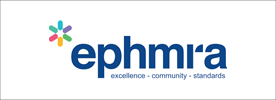
At M3 Global Research, we recognise the paramount importance of optimising completion rates for your client-provided lists. Our primary motivation in developing List Match 2.0 is to empower you with precise and actionable solutions for intricate business challenges. This innovative tool takes us beyond the conventional methods of using National Provider Identifier (NPI) and Medical Education Number (ME Number), enabling us to extract maximum feasibility from each client list you provide.
In streamlining list-based recruitment, we employ a matching solution to identify contacts within the client's list that are also present in our panels. This process entails comparing entries based on various attributes, such as names, email addresses, NPI or ME Number, and other pertinent data points. In the past, subtle differences in names, like "Anthony" versus "Tony," often went unnoticed. However, the implementation of our new list matching tool equips us to detect these data inconsistencies, thereby enhancing list efficiency and elevating our matching rates.
We conduct list matching during the bidding phase, recognising that the feasibility of your project significantly hinges on whether these contacts are active members of our panels who have previously consented to participate in market research. By integrating our List Match 2.0 tool into our industry-leading recruitment solutions, which include dynamic profiling and custom recruitment, we are better positioned to offer improved feasibility assessments to our clients. This, in turn, ensures a seamless experience for our panelists, reducing the likelihood of screen-outs.
Traditional List Matching Challenges
One of the foremost challenges in successful list matching has been the non-standardised nature of contact lists. Conventional solutions have often been hampered by these variations, which encompass differences in spelling, abbreviations, and formatting. Additionally, variations in the order of input data often led to non-matches, despite records referring to the same identification.
Innovative Approaches to Finding the Perfect Match
To address the challenges associated with list matching, we have refined our approach by introducing this new tool, which significantly enhances list efficiency. Our innovative solution scans and assigns scores to each record, and once a record has undergone our meticulous scanning process, it receives a score. We collaborate closely with you to determine the appropriate match score threshold that aligns with your project goals.
The novelty of our approach lies in its ability to establish matches irrespective of multiple variations and irregularities, including phonetics, abbreviations, non-phonetic similarities, transliterations, parsing and restructuring, misalignments, noise, synonyms, and typographic differences.
By the Numbers
We applied both solutions to a recent project:
- The total number of active panel members matched increased by a remarkable 81%, soaring from 411 to 744.
- The total number of completions from matched active panel members surged by 48%, rising from 39 to 58.
In stark contrast to traditional list matching, our List Match 2.0 solution excels at identifying matches within inconsistent and disorganised data. This evolution in our list matching capabilities effectively addresses the challenges previously associated with list matching, enhancing our project feasibility assessments and participant experiences. As we chart our course into the future, our unwavering commitment to innovation fuels our determination to deliver exceptional results for our clients. Share your specific criteria with us, and experience firsthand how we rise to the challenge. Rest assured; we pledge full transparency in our feasibility assessments.
Are you ready to maximise your list potential?





